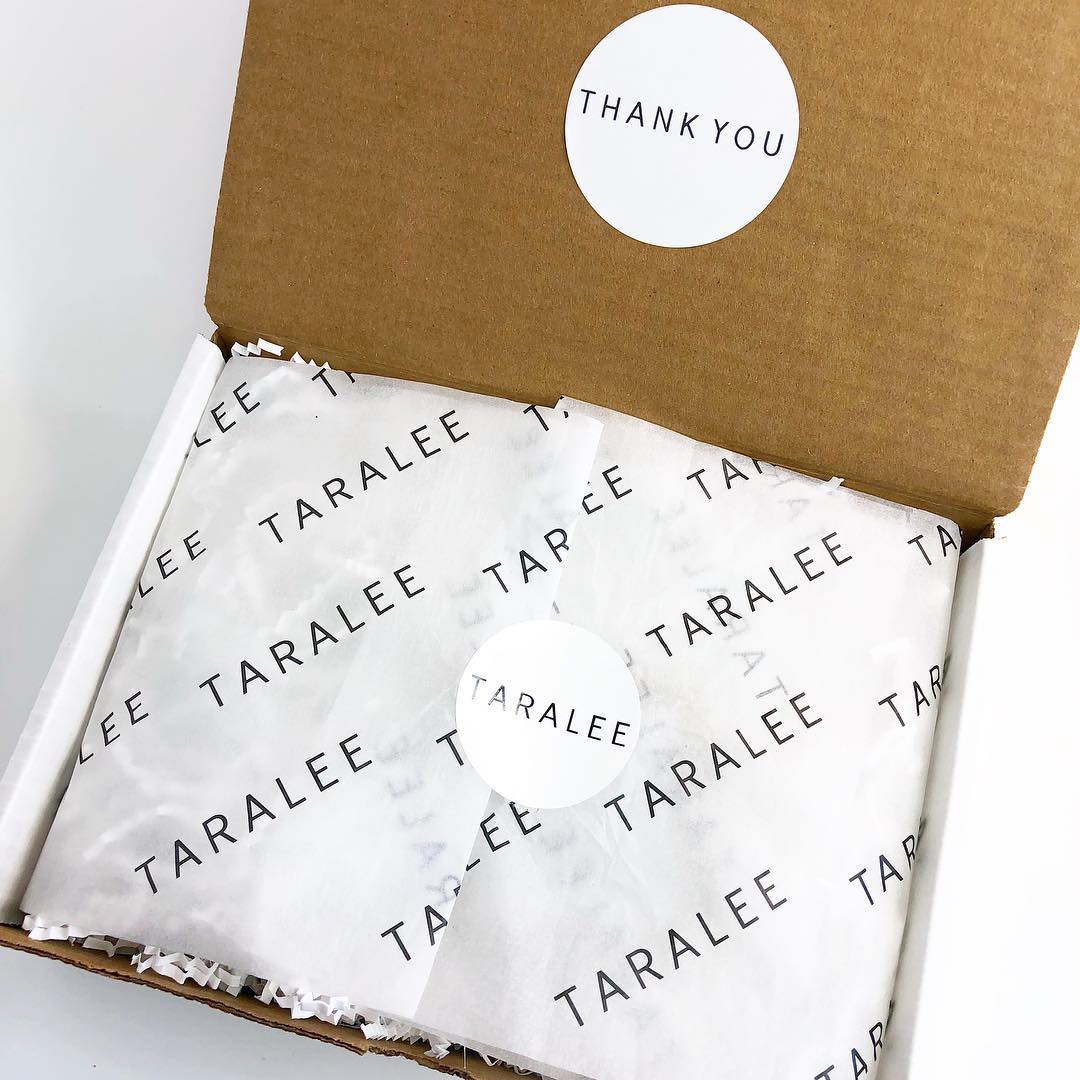In honor of Earth Day 2019, we are dedicating this week’s blog to sustainability. Consumers are becoming more aware of the environmental impact of their habits. So, there is a major shift underway in what consumers want from the brands they support. We spoke to Briody Scholes, the founder of the sustainable brand collective ECOnation, about the growing importance of green marketing, and why brands should be out and proud about their sustainable credentials.
What is Green Marketing?
In 2019, brands are having to prove to their customer base that they are working to reduce their footprint. But this doesn’t just affect brands who have built their identity off having a ‘green’ image. Regular brands, who haven’t so much mentioned to word ‘sustainable’, are now being expected to do their bit. According to Forbes, 90% of CEOS say that sustainable practices are now fundamental to a business’s success.
But even for sustainable’ brands, this expectation for greater transparency presents challenges. Being ‘green’ is one thing, but ‘communicating’ green is something else entirely. This is where green marketing can help.
At its heart, ‘green marketing’ is exactly what it sounds like. It’s about putting your sustainable mission front and center in your branding and marketing strategies. As the desire grows amongst consumers for sustainable goods, there are ever more marketing firms specializing in this area. The ECOnation Collective, the brainchild of marketing manager Briody Scholes, is at the forefront. It’s an example of a business aiming to put green marketing at the forefront of how brands communicate to their customers.
“I started ECOnation Collective with a passion for beautiful things that are also good for us and the environment. I wanted to create a niche’ agency that only offered products that were environmentally and socially responsible, brands that were ethical. I felt that the trend to shop ethically was here to stay and I wanted buyers to be able to find these products all in one place. I essentially do the homework on the brands for my buyers and help my brands to connect with stores around Australia.”

Defining a Sustainable Brand
But before we go any further, what exactly is a sustainable brand? It’s a term which is becoming more and more mainstream in 2019, but the answer is really a two-fold one. it’s not just about the sustainability of a product; it’s also about the identity of the brand itself. Unless a brand is communicating its green mission to its customer base, then its efforts are unlikely to be recognized.
This is where green marketing comes into the picture. If your brand wants to gain recognition for its efforts, or inspire its customers to make more sustainable decisions, you need to bring them on this journey with you.
According to Briody Scholes, sustainable branding is about the journey, rather than the destination:
“A sustainable brand is a brand that is working towards making a positive environmental impact, and a product that is made ethically with the environmental footprint at the forefront of the brands’ considerations. I like to say ‘working towards’ because we don’t always have things perfect from the get-go, and getting a brand 100% sustainable is always a work in progress. A sustainable brand is made to last, and offers the client a true eco-alternative.”
Common wisdom says that only ‘100% sustainable’ brands can make sustainability into a selling point. Anything less would be misleading or dishonest. Yet these attitudes do a lot more harm than good. Why? Because it paints sustainability as unattainable for the average business. If we discourage brands from engaging with green marketing, global efforts to preserve the environment will never be as effective as they could be.
So at its heart, Green marketing is all about transparency. It’s about showing customers that you are taking steps, big or small, to create positive environmental change.

Why does this matter? Because more and more consumers are embracing sustainable brands
The rise of more socially and environmentally-conscious consumers is one of the biggest shifts in purchasing behavior in the past decade. Awareness about issues like plastic pollution and climate change has changed the priorities of many. For Briody Scholes, this shift means that brands’ marketing strategies have to keep pace:
“A massive 84% of consumers now say that they make an effort to seek out environmentally-friendly products whenever they can, and this is just growing and growing. I would say that it’s not just a trendy way to shop, but a habit of shoppers that is here to stay. People are now asking all the right questions of brands; they want to know how the product is sourced, if it’s ethical and the people behind the brand and their story.”
But as sustainable brands become more in demand, this raises obvious concerns. If businesses view sustainability as a ‘trend’, it becomes tempting to adopt a green image without walking the walk. So, what should consumers look for to separate truly sustainable brands from those trying to piggyback this shift?
“It all comes from talking with the brand owners and knowing their story. It’s about understanding the people behind that brand, and knowing why they are wanting to make a difference. You have to do your homework too; look at their social media and websites. If they are walking the walk and talking the talk, it is a good sign!”
This is where green marketing is distinct from the notorious ‘greenwashing’ practices. In 2019, the latter is growing increasingly hard to pull off. There are more resources out there than ever before for consumers to educate themselves. False claims will also seriously damage a brand’s credibility. What people want is access to greater product knowledge, and for brands to pull back the curtain so that they can see what happens behind the scenes.
4 Green marketing techniques that all businesses can adopt:

1. Sustainable Packaging design
We’ve said it before and we’ll say it again. Your packaging design is one of the strongest pieces of green marketing you can make as a business. Why? Because your customer is guaranteed to engage with it! Whether it’s to find product information, or simply to unpack their purchase, consumers have a lot of interaction with product packaging. For this reason, it’s one of the first places they will look for evidence of a sustainable commitment.
According to Nielsen, 52% of consumers are influenced by packaging when buying sustainable products. So, if your green marketing strategies don’t extend to your packaging design, you may find that identifying yourself as a ‘sustainable’ brand is a hard sell to consumers.
Imagine having eco-friendly products wrapped in packaging that is neither recyclable or biodegradable. This would present a confusing and contradictory message to your customers! To create a truly sustainable brand, everything needs to fit into this image.
2. ‘Talk’ about your ‘walk’
It’s been said over and over again how important it is for brands to ‘walk the walk’ if they want to be truly sustainable. But much less is said about how they also need to ‘talk the walk’. This allows consumers can see the steps you are taking to reduce your footprint. After all, how can consumers seek out environmentally-responsible brands unless they know about their efforts? In fact, 52% of consumers believe that brands aren’t being sustainable unless they get information telling them otherwise. So, this really isn’t something to be modest about!
With the internet at our disposal, there are so many different avenues for you to put green marketing into practice. Blogging, social media, online video and podcasts provide brands with a fantastic set of tools to articulate their brand story with.
3. Help your customers to help you
The way consumers support sustainable brands is through buying their products. But they are also looking for other ways to get involved. According to a 2015 study by Cone Communications, 76% would donate to a charity, and 72% would volunteer for a cause, that was supported by a brand they liked. This creates some really fertile ground to introduce some cool initiatives for your customers!
This type of green marketing works best if you tie your efforts to the industry your brand is belongs to. This is because you are showing your commitment to improving your field from the inside. This helps to shape your brand into an authority that customers are more likely to trust. For example, noissue’s eco-alliance programme allows our customers to plant trees with each order of custom packaging. This helps to repopulate forests globally, and offset the impact of their packaging needs. customers!

4. Co-marketing with other sustainable brands
Brand partnerships and collectives are nothing new. It’s a tried-and-tested strategy to increase brand engagement and audience share. However, they have taken on a new level of meaning amongst sustainable brands.
Brand partnerships operate off the basis of a shared audience and values which align. This is something which can be difficult for sustainable brands. Although sustainability is becoming more mainstream, they still cater to a more niche audience. So, it really does become a case of ‘strength in numbers’. It’s this exact premise that Briody caters to through ECOnation Collective, especially for brands who are still building their brand identity.
“I find that brands are so time poor – they have all the amazing ideas to launch their products, but need someone to help them with the sales and marketing. The biggest advantage of being a part of ECOnation Collective is that my buyers already trust that my brands are ethical. They can be connected with other like-minded brands and work collaboratively together to gain more wholesale accounts.”
By partnering with other brands with a similar mission, businesses can draw attention to environmental issues whilst reinforcing their own green credentials. Blog swaps, social media campaigns or shared promotions create strong communities for consumers to connect with. It also highlights that by joining forces, you care about more than just profit; you also truly care for the planet.
The Wrap Up:
In a time when sustainability has never mattered more, green marketing is far more than just skin-deep. For brands to prove to consumers that their actions are having a positive environmental impact, good communication becomes vital. If you can really walk and walk and publicize how you are doing so, you stand to gain a lot of trust from your customer base!

